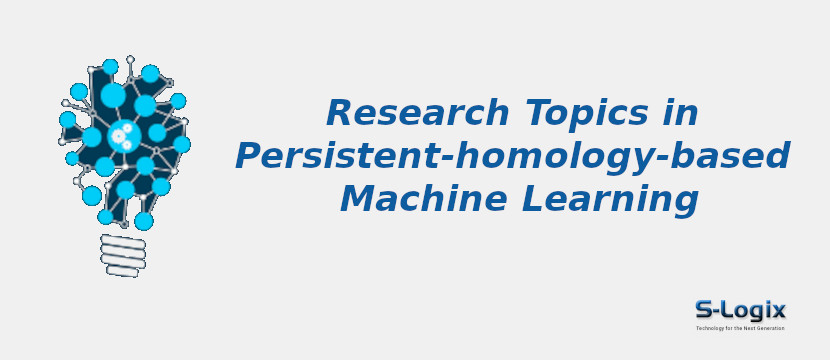An emerging method called persistent-homology-based machine learning (PHML) blends machine learning methods with topological data analysis (TDA) to extract valuable information from high-dimensional, complex data. It uses the persistent homology mathematical framework to examine the topological structures and features found in data, enabling the development of reliable and understandable machine learning models.
Key Components and Concepts involved in Persistent Homology-based Machine Learning are,
Persistent Homology:
Interpretability: The topological features derived from persistent homology often have clear and interpretable meanings, making it easier to understand and interpret the factors contributing to machine learning model decisions.
Robustness to Noise and Scale: Persistent homology-based approaches are often robust to noise and variations in scale, making them suitable for data with inherent uncertainties or multi-scale structures.
Support Vector Machines (SVM): SVMs are popular for classification tasks in PHML. They can effectively utilize topological features such as persistence diagrams or kernelized representations to separate data points into different classes.
Decision Trees and Random Forests: Decision trees and random forests can be used for classification and regression tasks, taking advantage of topological features or kernelized representations generated by persistent homology.
K-Nearest Neighbors (k-NN): k-NN algorithms use topological features to determine the similarity between data points, making them suitable for clustering tasks. Data points with similar topological characteristics are grouped.
Regression Models: Regression algorithms, including linear and support vector regression,can be enhanced by incorporating topological features to model complex relationships between input features and target variables.
Ensemble Learning: Ensemble methods like gradient boosting and AdaBoost can be employed to combine multiple machine learning models that utilize topological information, improving overall prediction accuracy.
Topology Capture: PHML excels at capturing and quantifying topological structures and higher-dimensional features in data. This provides a deeper understanding of the data underlying structure.
Robustness to Noise: PHML is robust to noise and small perturbations in data, making it suitable for datasets with inherent uncertainties or variations. It can identify persistent topological features even in the presence of noise.
Customization and Specialization: Methods can be customized and specialized for specific tasks and domains. Researchers can design tailored approaches to address unique challenges in their field.
Visualization and Communication: PHML provides tools that help communicate and visualize complex data structures to researchers, stakeholders, and the general audience, facilitating data-driven decision-making.
Mathematical Foundation: PHML is grounded in rigorous mathematical principles from algebraic topology, providing a solid theoretical foundation for its methodologies and algorithms.
Computational Complexity: This can be computationally intensive, especially for large and complex datasets. Calculating persistent homology and related topological features may require significant computational resources and time.
Overfitting: Like many machine learning approaches, PHML models can overfit the training data, especially when dealing with high-dimensional feature spaces. Regularization techniques may be needed to mitigate this issue.
Limited Interpretability: While PHML provides interpretable topological features, interpreting these features in the context of real-world applications can be challenging, particularly for non-experts in topology.
Domain Expertise: Applying effectively often requires topology and machine learning expertise. Collaboration between domain experts and machine learning practitioners is essential for successful implementation.
Data Availability: In some domains, obtaining high-quality and labeled data suitable for PHML can be challenging. Limited data availability may restrict the application of these techniques.
Complexity Trade-off: While PHML captures complex structural information, this can lead to complex models that are harder to interpret and may not always be necessary for the problem.
Subjectivity in Filtration: Determining an appropriate filtration strategy can be subjective, and different choices may lead to different results. Ensuring the robustness of the analysis across multiple filtration settings is important.
Biology and Bioinformatics:
1. Dynamic and Temporal Data Analysis: Developing PHML techniques that can effectively analyze dynamic and temporal data, capturing evolving topological patterns over time. This is relevant for applications in finance, climate modeling, and healthcare.
2. Multi-Modal Data Integration: Investigating methods to integrate topological information from multiple data modalities into a unified PHML framework for more comprehensive analysis and modeling.
3. Real-Time and Streaming Data: Extending PHML algorithms to handle streaming data efficiently, allowing for real-time topological analysis and decision-making in applications like IoT and sensor networks.
4. Privacy-Preserving Techniques: Investigating privacy-preserving PHML methods that protect sensitive data while allowing for meaningful topological analysis, particularly in healthcare and finance.
5. Automated Parameter Tuning: Developing automated techniques for selecting optimal parameters in PHML models to reduce the burden on users and improve model performance.
6. Complex Network Analysis: Extending PHML techniques to analyze complex network structures, including dynamic and multiplex networks, with applications in social network analysis, transportation, and communication networks.
